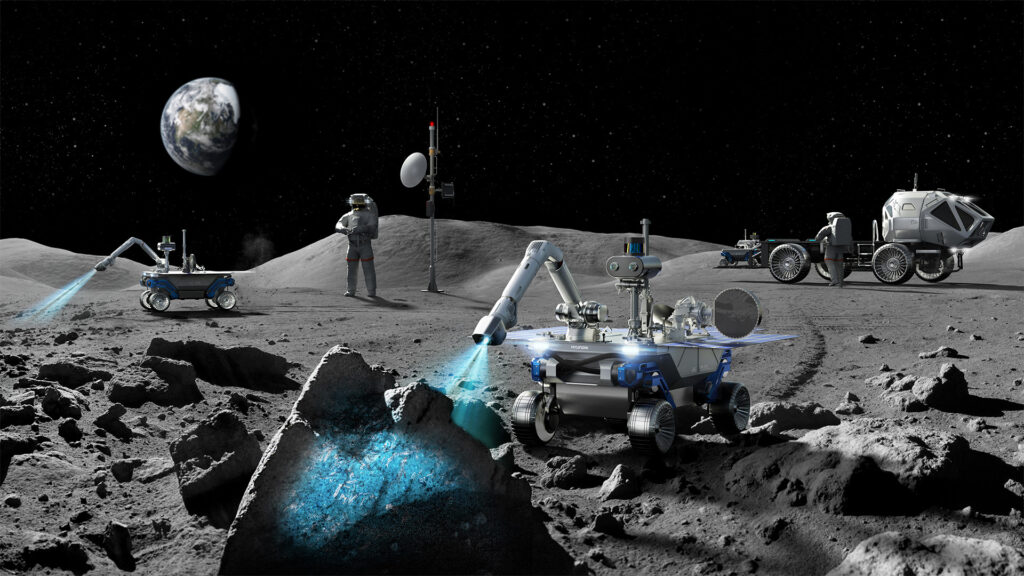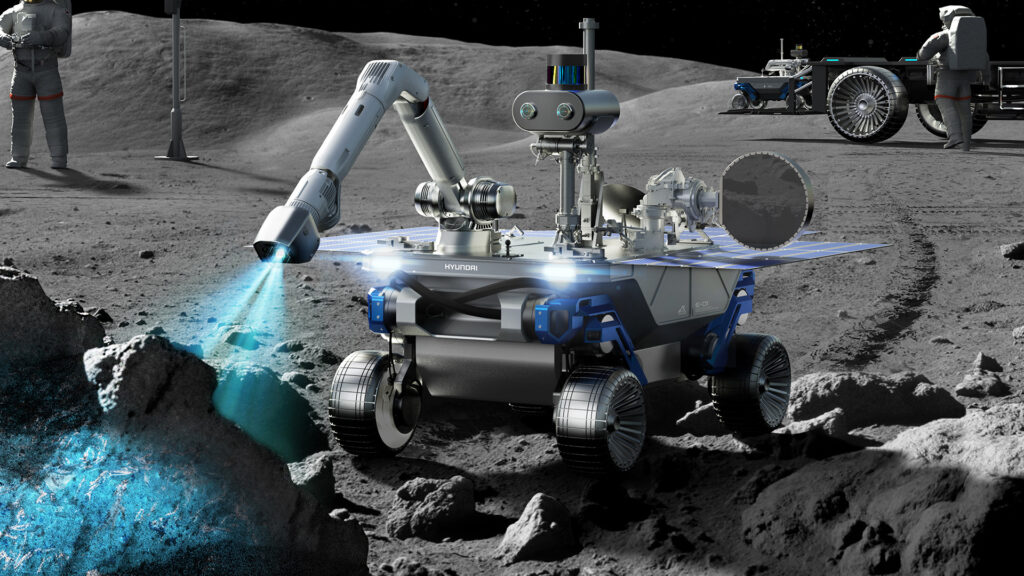Hyundai has started to work on a development model for its ‘lunar exploration mobility rover’ with the intention of building a vehicle ready to be launched into space in 2027.
The rover features a host of robotics and autonomous driving technologies from Hyundai and Kia, including cameras and LiDAR. It also features a complete drive system, a solar panel, charging port for the battery, and is underpinned by a multi-purpose mobility platform. It will also have an advanced thermal management function and radiation shielding to ensure it can withstand the rigors of space.
Hyundai notes the rover’s upper section will carry scientific payloads for lunar surface exploration. It will also be equipped with functions enabling digging and excavation and will initially be deployed near the south pole area of the moon. The entire unit weighs just 70 kg (154 lbs).

Before the rover can get to the moon, however, Hyundai will test it on Earth and in similar environments to those found on the Moon’s surface. The initial test unit should be completed by the second half of 2024.
Read: Hyundai And Kia Are Going To The Moon With South Korea’s Space Agency
The brand is working with six important Korean research institutes on the project, including the Korea Astronomy and Space Science Institute (KASI), Electronics and Telecommunication Research Institute (ETRI), Korea Institute of Civil Engineering and Building Technology (KICT), Korea Aerospace Research Institute (KARI), Korea Atomic Energy Research Institute (KAERI), and Korea Automotive Technology Institute (KATECH).
“Hyundai Motor Group has consistently stated its goal is to contribute to expanding human reach and the scope of human mobility experiences,” executive vice president and head of R&D Planning & Coordination Center of Hyundai Motor and Kia, Yong Wha Kim said. “The creation of the lunar exploration mobility development model not only reflects this goal, but also shows our ambition to achieve tangible results in the face of significant challenges. With the rover’s development, we are moving beyond land, sea and air mobility to expand into space mobility.”








